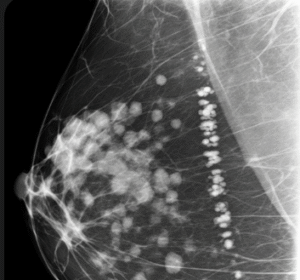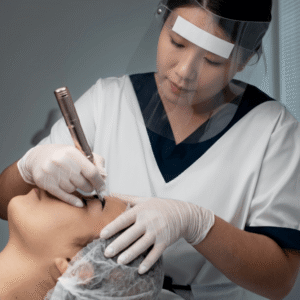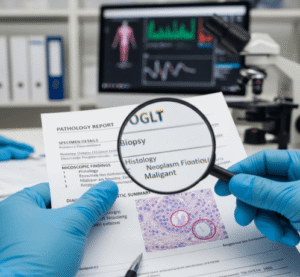Overview
Limb Salvage Surgery is a complex surgical procedure aimed at preserving a limb that might otherwise require amputation, often due to bone cancer, severe trauma, infections, or vascular conditions. The procedure combines oncologic or orthopedic surgery techniques with reconstructive methods to restore function and appearance while removing diseased or damaged tissue.
In Korea, limb salvage procedures are performed by highly specialized orthopedic and oncologic surgeons using advanced imaging, 3D planning, and modern reconstruction techniques, ensuring both functional and cosmetic preservation.
Highlights:
- ✅ Preserves limb functionality and appearance
- ✅ Reduces the need for amputation
- ✅ Available with advanced orthopedic and reconstructive technology in Korea
What is Limb Salvage?
Limb Salvage Surgery involves removing diseased or damaged tissue from a limb and reconstructing it using techniques such as:
- Bone grafts or prosthetic implants
- Soft tissue flaps and microvascular reconstruction
- Nerve and tendon repair
- Joint replacement or stabilization
Indications include:
- Malignant bone or soft tissue tumors
- Severe trauma or crush injuries
- Osteomyelitis (severe bone infection)
- Vascular compromise or chronic non-healing wounds
Important: The goal is to maintain as much natural limb function as possible while ensuring complete disease removal.
What are the benefits?
- Preservation of limb function: Enables walking, grasping, or other critical movements
- Avoids amputation: Reduces physical and psychological impact
- Improved quality of life: Allows participation in daily activities
- Cosmetic restoration: Maintains a more natural appearance of the limb
Key benefits highlighted:
- ⚡ Maintains mobility and independence
- ⚡ Reduces emotional and social impact of amputation
- ⚡ Provides durable functional outcomes
- ⚡ Enables integration with prosthetics if needed
Procedure Details
1) How should I prepare for Limb Salvage Surgery?
- Preoperative evaluation: Comprehensive imaging (MRI, CT, PET), biopsy, and blood tests
- Medical optimization: Manage comorbidities like diabetes, hypertension, or anemia
- Consent and education: Discuss surgery risks, benefits, and expected recovery
- Plan for rehabilitation: Arrange physical therapy support post-surgery
- Preoperative counseling: Psychological support for patients facing complex surgery
2) What happens during Limb Salvage Surgery?
- Anesthesia: General anesthesia is administered
- Resection of diseased tissue: Tumor, damaged bone, or infected tissue is carefully removed
- Reconstruction: Bone grafts, prosthetic implants, soft tissue flaps, or tendon repairs are performed
- Stabilization: Internal fixation, plates, screws, or external supports may be used
- Closure: Surgical site is closed, often with drains to prevent fluid accumulation
Duration: Typically 4–8 hours, depending on complexity and reconstruction needs
3) What happens after Limb Salvage Surgery?
- Recovery monitoring: Vital signs, limb perfusion, and wound healing closely observed
- Pain management: Medications and local anesthesia as needed
- Physical therapy: Early mobilization and rehabilitation to restore function
- Follow-up care: Imaging to ensure disease-free status and monitor reconstruction
Highlights for post-operative care:
- ⚡ Watch for signs of infection or poor circulation
- ⚡ Gradually increase limb activity under physiotherapy guidance
- ⚡ Maintain hygiene and wound care
- ⚡ Attend regular follow-ups for long-term monitoring
Risks / Benefits
Risks:
- Infection or wound healing complications
- Graft or prosthetic failure
- Nerve or blood vessel injury
- Risk of recurrence if underlying disease is malignant
Benefits:
- Preserves limb function and appearance
- Reduces need for amputation
- Improves quality of life and independence
- Long-term functional and cosmetic restoration
Recovery and Outlook
- Hospital stay: Typically 1–2 weeks depending on surgery complexity
- Full recovery: Functional recovery may take 3–6 months or longer with rehabilitation
- Long-term outlook: High success rate for limb preservation, with ongoing monitoring for disease control
- Follow-up: Regular imaging and physiotherapy to optimize outcomes
Tips for optimal recovery:
- ✅ Adhere to physiotherapy and rehabilitation plan
- ✅ Monitor for signs of infection or vascular compromise
- ✅ Maintain proper nutrition and hydration for healing
- ✅ Attend scheduled follow-up appointments
When To Call the Doctor
- Sudden increase in pain, swelling, or redness
- Signs of infection (fever, discharge)
- Loss of sensation or mobility in the limb
- Any complications with implants, grafts, or soft tissue healing
Best Korea Option / Process
Korea offers advanced limb salvage care:
- Top hospitals: Specialized orthopedic-oncology and reconstructive teams
- Advanced diagnostics: MRI, CT, PET scans for precise planning
- Surgical options: Complex limb reconstruction using grafts, implants, and soft tissue flaps
- Postoperative care: Pain management, rehabilitation, and physiotherapy
- International patient support: Online consultations, hospital scheduling, and telemedicine follow-up
Step-by-step process in Korea:
- Online consultation and imaging review
- Preoperative evaluation and planning
- Limb salvage surgery performed by expert surgeons
- Postoperative monitoring and initiation of rehabilitation
- Long-term follow-up for functional and oncologic outcomes












